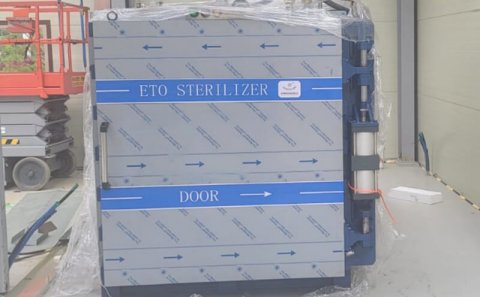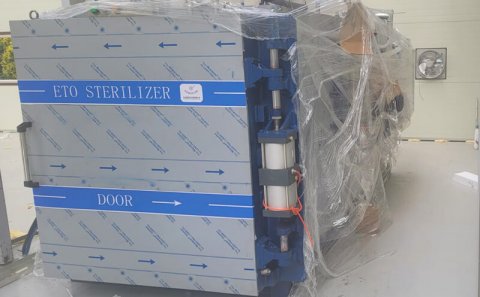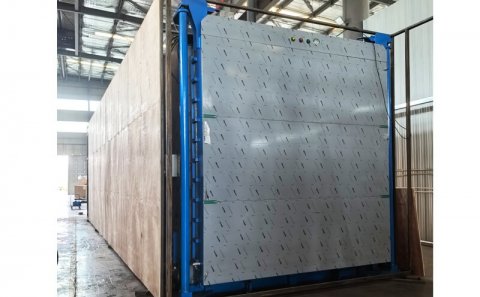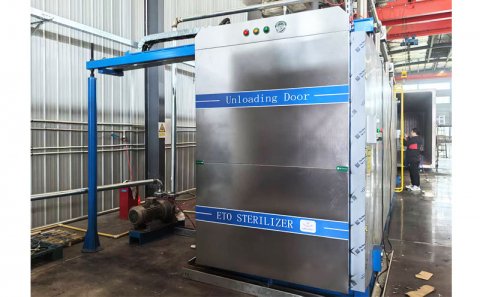EO gas and its mixture is an effective disinfectant mainly used for sterilization of medical devices which are sensitive to damp heat but can not be sterilized with damp heat.
EO is toxic, flammable and explosive. It should be noted that.
Ventilation
Ventilation, part of the sterilization process, the desorption of ethylene oxide and / or its reaction products from the medical device to a predetermined level. It can be carried out in sterilizer or in a single cabinet room or room.
Validation,IQ,OQ,PQ,
The purpose of validation is to demonstrate that the sterilization process established in the process definition (see Clause 8) can be delivered effectively and reproducibly to the product within the sterilization load. Validation consists of a number of identified stages: installation qualification (IQ), operational qualification (OQ) and performance qualification (PQ). Testing shall not commence until the procedures and/or protocols have been approved.
In a health care facility, IQ and OQ are typically performed by the sterilizer manufacturer, although they can be performed by any qualified personnel. MPQ data might be available from the sterilizer manufacturer for general loads.
Conditioning treatment
Prior to the addition of ethylene oxide, the products in the sterilization cycle are treated to reach the predetermined temperature and relative humidity.
parametric release
declaration that product is sterile, based on records demonstrating that the process parameters were delivered within specified tolerances.
operational qualification(OQ)
process of obtaining and documenting evidence that installed equipment operates within predetermined limits when used in accordance with its operational procedures
performance qualification(PQ)
process of obtaining and documenting evidence that the equipment, as installed and operated in accordance with operational procedures, consistently performs in accordance with predetermined criteria and thereby yields product meeting its specification
Preconditioning
treatment of product, prior to the sterilization cycle, in a room or chamber to attain specified conditions for temperature and relative humidity
-
a)time;
-
b)temperature;
-
c)humidity;
-
d)transfer time.
The process variables for the sterilization cycle include:
-
a)exposure time;
-
b)temperature;
-
c)humidity;
-
d)EO concentration;
-
e)pressure.
sterilization process
sterility assurance level(SAL)
probability of a single viable microorganism occurring on an item after sterilization
Note 1 to entry: The term SAL takes a quantitative value, generally 10-6 or 10-3. When applying this quantitative value to assurance of sterility, an SAL of 10-6 has a lower value but provides a greater assurance of sterility than an SAL of 10-3.
Sterilization
validated process used to render product free from viable microorganisms.
Note 1 to entry: In a sterilization process, the nature of microbial inactivation is exponential and thus the survival of a microorganism on an individual item can be expressed in terms of probability. While this probability can be reduced to a very low number, it can never be reduced to zero.
sterilization process
series of actions or operations needed to achieve the specified requirements for sterility.
Note 1 to entry: This series of actions or operations includes preconditioning (if necessary), exposure to the ethylene oxide under defined conditions and any necessary post-treatment required for the removal of ethylene oxide and its by-products. It does not include any cleaning, disinfection or packaging operations that precede the sterilization process.
Sterilizer characterization.
The sterilization chamber should have the following performance and monitoring capabilities:
-
means of monitoring time, chamber pressure, temperature and humidity (if humidity additions are controlled by sensor readings);
-
means of controlling time, chamber pressure, temperature and humidity, if humidity additions are controlled by sensor readings (when sensors are fixed on the equipment, ensure that a correlation is made during IQ or OQ to the pressure rise);
-
if humidity is not controlled by sensor readings, means to monitor and control steam additions;
-
if parametric release is used, analytical instrumentation for the direct analysis of humidity during conditioning and EO concentration during EO exposure time (also see 9.5.5 and D.9.5.5);
-
a system controlling the admission of gaseous EO to the chamber;
The system of controlling EO gas into the cabinet room:
-
means to demonstrate that gaseous EO is injected into the chamber. This can be done by measuring the temperature of the EO gas flowing from the vaporizer to the sterilizer chamber. This system can control EO concentration during EO exposure time.
-
means to detect and alert deviations to cycle parameters so that remedial action can be taken in a timely fashion.
-
The system for admission of EO to the sterilizer should be equipped with a vaporizer to prevent liquid EO from being admitted to the sterilizer chamber.
-
The temperature of the EO gas flowing from the vaporizer to the sterilizer chamber should be measured to demonstrate that gaseous EO has been produced.
-
A minimum of two probes to measure chamber temperature should be used. Large volume chambers can be fitted with more than two probes so as to ensure that the monitoring/control system captures data that reflects the temperature throughout the chamber during use.
-
It is important to maintain uniform conditions within the sterilizer chamber during processing. This can be achieved by forced gas circulation. If used, a gas circulation system should be equipped with a monitoring device to indicate when circulation is ineffective as devices that solely monitor “power on” to the fan or pump are not sufficient.
Areas used for storage of cylinders, tanks or cartridges of EO or EO gas mixtures should be secured and ventilated.
Reference: iso-11135-2014.
Jun 17, 2025
view: 1000
Application scope of ethylene oxide sterilization Ethylene oxide does not damage the sterilized articles and has strong penetration, so most articles that are not suitable for general sterilization can be sterilized and sterilized with ethy...
Read More
Jul 11, 2023
view: 1733
Inspection of mask after sterilization with EO Any product must pass the sterilization verification procedure to determine the sterilization process! Sterilization verification is generally carried out by half cycle method. This method is to determin...
Read More










